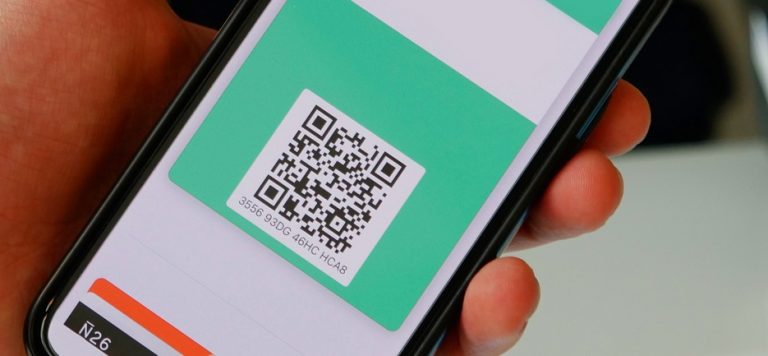
A new study by Juniper Research has projected that the value of QR code payments will grow by 50% globally, rising from $5.4 trillion in 2025 to over $8 trillion in 2029.
The anticipated surge is attributed to the increasing national standardization of QR payment schemes and the expansion of Account-to-Account (A2A) payment initiatives.
This projection comes at a time when Nigeria’s Inter-Bank Settlement System (NIBSS) is ramping up efforts to deepen the adoption of the Nigeria Quick Response (NQR) payment system to accelerate the country’s transition to a cashless economy.
Register for Tekedia Mini-MBA edition 19 (Feb 9 – May 2, 2026): big discounts for early bird.
Tekedia AI in Business Masterclass opens registrations.
Join Tekedia Capital Syndicate and co-invest in great global startups.
Register for Tekedia AI Lab: From Technical Design to Deployment (next edition begins Jan 24 2026).
However, while QR code payments are expected to dominate in several regions, the report warns that Near-field Communication (NFC) payments could pose a challenge, particularly in North America and Europe, where Apple’s decision to open NFC technology to third-party apps may shift consumer preferences.
Despite growing competition from NFC payments, QR codes are projected to maintain their strong appeal due to their accessibility, affordability, and universal compatibility. According to Juniper Research, these features make QR code payments an attractive option for both businesses and consumers, particularly in developing markets where mobile penetration is high but traditional banking infrastructure remains underdeveloped.
The report highlights two major advantages of QR codes over NFC payments:
- Lower operational costs – QR technology is significantly cheaper than traditional point-of-sale (POS) systems, reducing the financial burden on small businesses.
- Broad device compatibility – Unlike NFC, which requires specialized hardware, QR codes can be scanned using any smartphone with a camera, making them a more versatile solution for merchants and consumers.
Daniel Bedford, the lead author of the study, underscored the significance of QR code payments in financial inclusion, particularly for small businesses and informal workers.
“QR code technology is cheaper and more accessible than traditional point-of-sale systems. This lowers the barrier to entry for smaller vendors, such as street vendors, drivers, and independent workers, enabling them to accept payments easily and driving financial inclusion,” Bedford stated.
The report advises payment providers to focus on tailoring their QR offerings to small and medium-sized enterprises (SMEs) to capitalize on this projected growth.
Nigeria’s Push for NQR to Strengthen Digital Payments
As QR code adoption rises globally, Nigeria is not left behind. Last week, NIBSS announced significant upgrades to its NQR payment system, enhancing its capabilities to offer faster and more secure digital transactions for businesses and individuals.
Speaking on the development, the Managing Director and CEO of NIBSS, Premier Oiwoh, emphasized that the NQR is poised to revolutionize Nigeria’s payment industry. He highlighted that transactions made via NQR are processed instantly, ensuring seamless settlements.
“Beyond the P2P, there is also E2P on the MQR, and most of the bank apps have it today. My dream is to have hawkers on the streets being able to present their QR in the form of an ID card and then make payment. Cash cannot be everywhere; what we are all looking for is payment.
You can also send your personal QR code to anybody to pay you rather than send an account number,” Oiwoh stated during the unveiling of the NQR upgrades.
These enhancements aim to further reduce cash dependence and improve transaction efficiency by enabling Person-to-Person (P2P) and Entity-to-Person (E2P) payments, expanding the system’s use cases.
The NQR system, introduced in March 2021 in collaboration with Nigerian financial institutions, is a key component of the country’s ongoing cashless policy. With Nigeria facing persistent cash shortages and challenges in financial inclusion, QR payments are increasingly being positioned as a solution for bridging the digital payment gap.
The system provides an easy-to-use and cost-effective alternative to traditional banking methods by allowing users to make payments simply by scanning a QR code. As more merchants, including small-scale vendors and informal traders, adopt the system, cash transactions are expected to decline, aligning with the Central Bank of Nigeria’s (CBN) financial inclusion goals.
Challenges and the Future of QR Payments in Nigeria
While the adoption of QR code payments in Nigeria presents immense potential, some challenges persist, including:
- Merchant Adoption – Many small businesses and informal traders still rely heavily on cash due to limited awareness and access to digital payment tools.
- Infrastructure and Internet Connectivity – QR payments require stable mobile networks, which can be a barrier in rural areas with poor internet access.
- Consumer Trust and Awareness – Many Nigerians remain skeptical of digital transactions due to concerns over fraud and cybersecurity threats.
However, the ongoing improvements to the NQR system signal a promising future. With continued investment in public awareness and infrastructure, QR code payments are expected to become a dominant force in Nigeria’s payment ecosystem, accelerating the transition towards a truly cashless economy.



